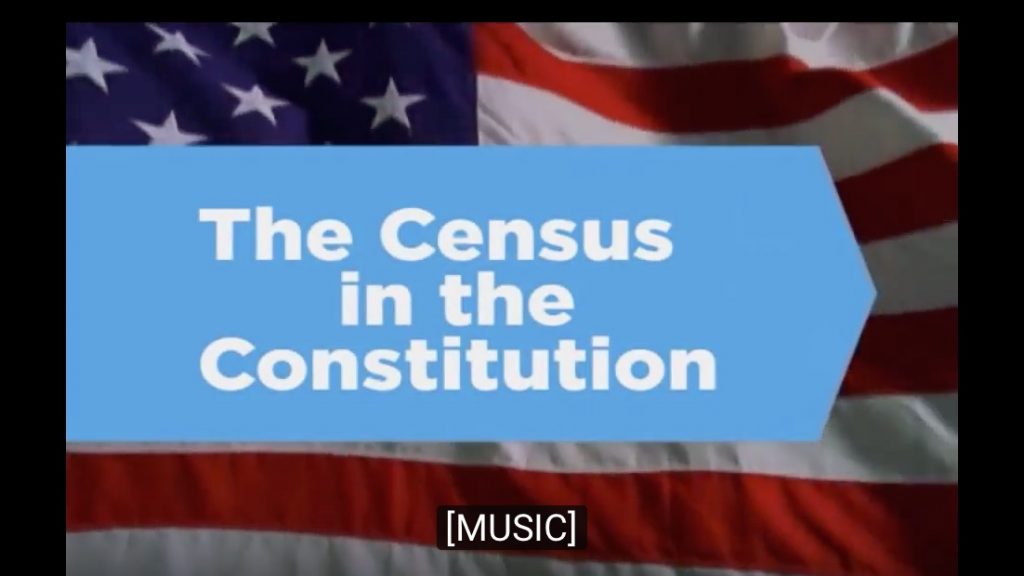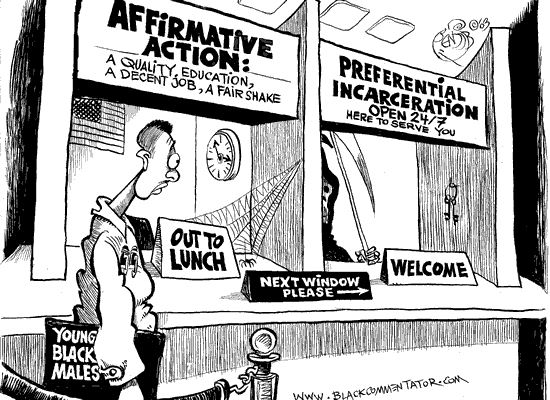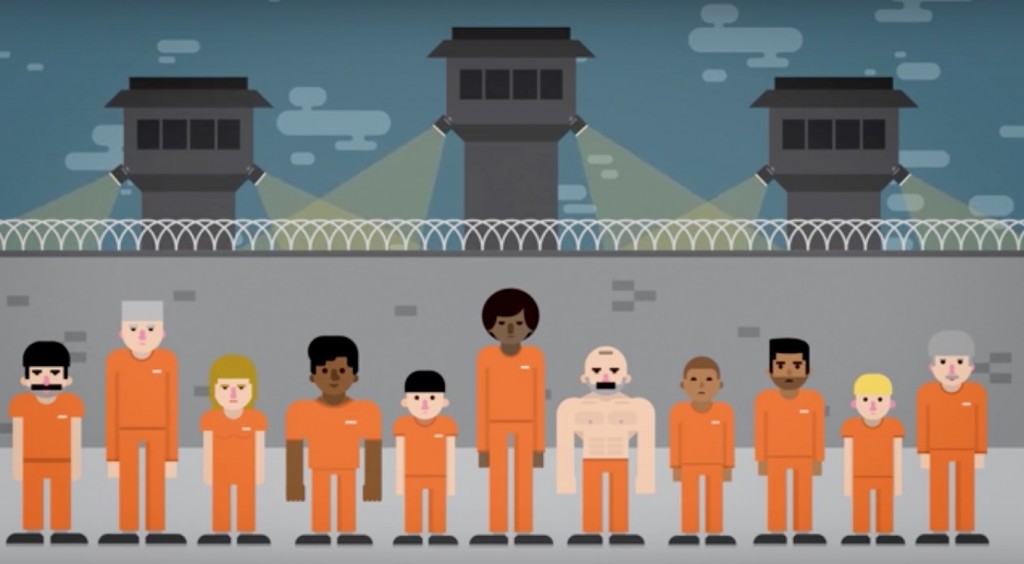Prison-based gerrymandering is destructive to the families of incarcerated individuals. The NJ State legislator is trying to end this practice #p2
Gerrymandering helped the GOP win big – so they seek to expand their advantage by sabotaging 2020 Census

Bill Moyers points out, “the Census is key to the work (of) researchers and journalists,” so hobbling the Census’ data collection process will hobble the ability of independent analysts to examine the realities of American life and to tell accurate and authoritative stories about it. Furthermore, funding to serve Americans is allocated according to the composition of neighborhoods and households – and these characteristics are established through the Census.
And by the way, did you know that the U.S. Census is required in our Constitution?
Marquette University archivist William Fliss tells how census data shows the transformation of the United States from a new republic to the nation it is today.
Slate shares a short synopsis of the Census’ importance in terms of services for Americans:
The decennial census is critical to ensuring that Americans are fairly represented in Washington, since it’s used as the basis for congressional redistricting. A mishandled census could undercount poor and minority populations, putting some states and many cities at a demographic disadvantage…
The best description of the Census’ importance comes, naturally, from the Census Bureau website (at least until Trump removes it):
The U.S. Census counts every resident in the United States. It is mandated by Article I, Section 2 of the Constitution and takes place every 10 years. The data collected by the decennial census determine the number of seats each state has in the U.S. House of Representatives and is also used to distribute billions in federal funds to local communities.
The 2010 Census represented the most massive participation movement ever witnessed in our country. Approximately 74 percent of the households returned their census forms by mail; the remaining households were counted by census workers walking neighborhoods throughout the United States. National and state population totals from the 2010 Census were released on December 21, 2010. Redistricting data, which include additional state, county and local counts, will be released starting in February 2011.
“The actual enumeration shall be made within three years after the first meeting of the Congress of the United States, and within every subsequent term of 10 years, in such manner as they shall by Law direct.”
~ Article I, Section 2 of the Constitution of the United States
Gerrymandering is what has allowed elections to be skewed toward Republican control
That bit about Census data driving the way election districts are drawn and how many Congressional Representative each state gets: is actually the reason why Republicans have recently acquired increasing control over Congress even during Democratic presidencies.
Bill Moyers’ David Daley opened up discussion about the power of gerrymandering in August 2016.
For all of the misleading nonsense about “rigged elections” coming from the Trump camp this summer, we haven’t talked enough about the way our electoral map really was rigged by Republicans after the 2010 census. These tilted (gerrymandered) maps make it possible for the Republicans to govern with a supermajority in Ohio, North Carolina and Wisconsin – despite getting less votes overall.
The WaPo elaborates:
How do conservative Republicans maintain so much power in the House, even though Americans reelected a liberal president and polls show that the GOP suffers from high disapproval ratings?
Salon editor David Daley’s punchy, though overstated, new book lays the blame for Republican power in the House on partisan gerrymandering, the byzantine process through which state legislatures draw district lines to favor incumbents from one party. Challenging the claim that increased partisan polarization is a result of voters naturally sorting themselves into red and blue states, Daley argues that a group of operatives in the Republican Party did the sorting for them. The GOP poured money into an unprecedented effort to control governorships and state legislative bodies in 2010 and to then redraw congressional districts so that the party could turn the House into a firewall against the Democrats.
While the term “gerrymander” has been around since the early years of the republic, computer technology and big money have allowed governors and legislatures to perfect the process in ways that have never before been imagined, according to Daley. The same technology that allows Amazon to figure out who buys what in any home on a given block now allows party officials to do the same with elections.
Although his argument might not be as sexy as talking about how money corrupts politics or how the 24-hour news media leaves us all screaming, the success of Republican legislatures and governors at redrawing congressional districts is the reason, he says, House Republican incumbents have increased their power and don’t have to worry about any “wave” election that would shift control to the other party.
So now: Why did the Census Bureau’s director quit?
Sabotage is probably the reason Census Bureau Director John Thompson resigned today on 11 May 2017. He probably looked at the writing on the wall and understood that the Trump administration has little intention of allowing a fair, impartial and complete Census of the American people to be held this cycle. Slate share some of the ways the sabotage is being carried out:
Protected: Tell the Census Bureau: Help inmate’s families get the aid the deserve and need
Prison-based gerrymandering brings in power & extra money to towns housing prisons

The political aspect of prison-based gerrymandering is often presented as being the only aspect of the phenomenon worth discussing. It’s important, of course, but so is the net financial and services gain to a community housing a prison when compared against the net financial and services loss to an inmate’s pre-incarceration community – the community where his children and other family members may still live. The direct negative financial and social impact of prison-based gerrymandering on an inmate’s true “home community” merits attention and discussion as much as the political aspect does.
The loss occurs when funding and services are diverted away from low-income homes where they are needed to provide for the security of single-parent youth and families; and land in the coffers of the financially stable community where an absent parent is being housed as a prison inmate.
In the 2011 Washington University Journal of Law & Policy report Locked Up and Counted Out: Bringing an End to Prison-based Gerrymandering, author John C. Drake makes these points:
D. Effect of Census Count on Redistricting
The policy of counting prisoners as residents of the communities in which they are imprisoned has profound consequences. It results in population data about communities—both the prison communities and the communities of origin—that, while relied on by policy makers, does not accurately reflect the needs of those communities.78 Depending on the specific state formula for distribution of tax revenue, counties with prisons can get bumps in education funding,79 sales tax revenue,80 and targeted funding for communities with sizable low-income populations.81 ?The imagination,? the Census Bureau itself has noted, ?is the only limit upon the use of the statistics that come out of the census.?82
… Critics such as the NAACP Legal Defense and Educational Fund have said that counting prisoners toward a community‘s population for redistricting purposes ?artificially inflates the population count—and thus, the political influence—of the districts where prisons and jails are located.?96 The increase in population attributable to prisoners in rural prison towns comes at the expense of the urban communities from which prisoners typically hail, a dynamic that has led critics to call the effect prison- based gerrymandering.97
78. See WAGNER ET AL., supra note 74, at 3 (?The result of counting large external populations of prisoners as local residents leads to misleading conclusions about the size and growth of communities . . . . Counties that see prisons close their doors report that their Census populations declined when in fact their actual population did not. Conversely, population growth reported by some counties is due to the importation of prisoners to a new correctional institution.?).
79. Lotke & Wagner, supra note 64, at 601.
80. WAGNER ET AL., supra note 74, at 8.
81. Lotke & Wagner, supra note 64, at 604–05.
82. U.S. CENSUS BUREAU, U.S. CENSUS BUREAU REPORT: STRENGTH IN NUMBERS:
YOUR GUIDE TO CENSUS 2010 REDISTRICTING DATA FROM THE U.S. CENSUS BUREAU (2010), available at http://www.census.gov/rdo/pdf/StrengthInNumbers2010.pdf.
96. NAACP LEGAL DEF. AND EDUC. FUND, CAPTIVE CONSTITUENTS: PRISON-BASED GERRYMANDERING & THE DISTORTION OF OUR DEMOCRACY (2010), available at http:// naacpldf.org/files/publications/captive_constituents.pdf.
97. The moniker was assigned because of the increased political influence attained by communities with prison populations. NAACP LEGAL DEF. AND EDUC. FUND, supra note 96; see also PRISONERS OF THE CENSUS, http://www.prisonersofthecensus.org (last visited Sept. 23, 2010).
The cost of “tough on crime” is $1B each year of your taxpayer money
 vlogbrothers has created a sobering video about the “massive $75 BILLION per year failed experiment” we’re living in – which is what it costs American taxpayers each year to keep almost 1% of our neighbors in prison.
vlogbrothers has created a sobering video about the “massive $75 BILLION per year failed experiment” we’re living in – which is what it costs American taxpayers each year to keep almost 1% of our neighbors in prison.
The video’s done in a light-hearted animation style and is under 4 minutes long, but pay attention to the scary statistics:
